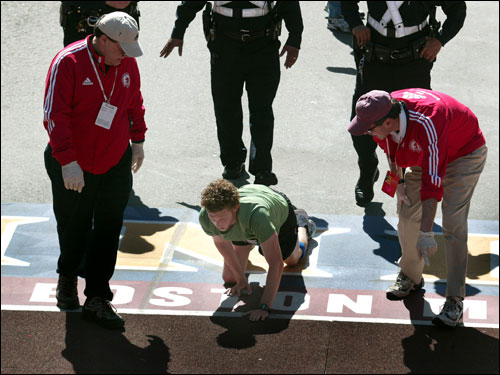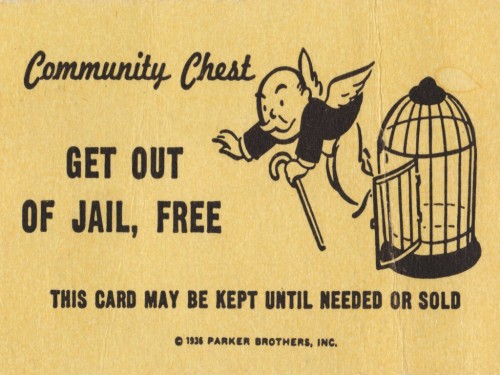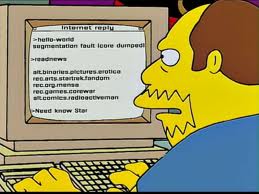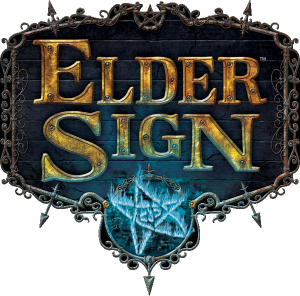Normally when people talk about hitting the ground running, it isn’t meant literally.
But that’s precisely what we’re doing here today.

Not quick enough…
See, during the few months I decided I was going to get into better shape through running, I read an article my brother recommended to me. Given that he runs marathons for fun, I figured he knew what he was talking about.
The upshot to the piece was that every runner, no matter how serious or casual, should seek out and participate in a 5k in the next month because it’s a small, manageable running task that serves as an easy diagnostic. For a serious runner, it said, it will be fun to test yourself against others and see where you stand. Conversely, for a casual runner, you’ll see where your weaknesses are.
Heeding that advice, I ran a 5k two weeks later. (I’d be too ashamed to tell you exactly how it went, but the number 48 might have had something to do with my time, and I may have walked more than I ran.) Certainly, though, I found out where my weaknesses were.
As it turns out, the same applies to creative endeavors. Last May, I had been working exclusively on the same game for six months, and progress was coming to a stop. On the one hand, when you’ve worked every day for six months, really, how much else could you have to do? On the other hand, when you’ve worked only on one thing for six months, how could you possibly have the energy to see it objectively? These were questions I desired answers to.
While lurking around BoardGameGeek, I stumbled into the Design Contests forum and saw that some guy named Kai was sponsoring a contest where, from start to finish, you have 24 hours to make a complete game. I assumed that this was impossible, that having worked for so long on one thing, nothing good could come out of a single day’s work. But I figured what the hell and went for it.
And it was awesome.
Not the game. Rather, the experience. If you’ve ever designed games, you know how rough the revision process can be, with painstaking hours, days, and weeks spent fine-tuning mechanics, language, and all of the minor details that make a game really enjoyable. This exercise compressed that whole process into about 12 hours – the realistic amount of time that a person could actually work solely on the game in a 24 hour period. And given that no one expects gold in that short amount of a time, it proved liberating.

Yup. Pretty much exactly like that.
Since May, I’ve taken part in the contest each month. Some months, I’ve turned out what I think is pretty great work given the circumstances. Other months, I’ve made some real crap (I’m looking at you, July). Nevertheless, I’ve always enjoyed the process. What’s more, doing the contest has made me a better designer.
The 24 Hour Marathon
At the start of each month, Kai Bettzieche, the contest’s patron saint, posts that month’s requirement. Usually, it’s a thematic element that must be incorporated, such as “Wild West” or “Tibetan mastiff”. Sometimes, the requirement is broader, like “time”, which could be included as either a mechanic or as a theme. Once in a while, the requirement is a functional mechanic, like “dice”.

Sort of like that, I guess…
Participants may review the theme and wait for inspiration to strike before starting to work. This is a commonly misunderstood facet of the contest. However, from the moment you do any tangible work on the game, you have to start the clock.
During those 24 hours, you do all of the design and refinement by yourself, although you may bounce ideas off of friends and family and get help with playtesting. In short, all of the tangible work has to be done by you and you alone.
Once finished – or when you’re so close to the 24 hour mark that you’re scared you won’t make it if you try to tweak it any more – you post a PDF of the game to that month’s thread, including a few paragraphs describing the game.
Voting begins at the start of the following month, lasting for the rest of that month. At the end of that time, the game with the most “thumbs” wins, simple as that. Usually, the winner gets 10 “Geek Gold” (BGG currency), and in the case of a tie, it’s split between the winners. Check out the official rules thread for the full details.
This proved to be such an enlightening experience for me that I suggest everyone try the 24 hour contest at least once. And here’s why:
#1. It’s Okay to Suck
Look at my entry for July. There’s really embarrassing stuff there, but it’s okay in those conditions. Nobody said, “Gee, Doug, your house looks like it was drawn by a kid who has never actually lived in a house before but seems to be able to imagine what it must be like.” Mercifully, nobody actually said anything about the game at all.

Yup. Pretty much like that.
Anyone who has tried the challenge knows that 24 hours is a very short amount of time. Sometimes, a good starting idea winds up being not so great in execution. Though the opposite is also entirely possible.
But unlike something that you’ve sunk months of your life into (or, you know, an entire country) only to have it simply not work, this is only 24 hours.
#2. You Can Try Out Different Mechanics
Prior to starting these design contests, I had never worked with dice before, which may come as a surprise given my well-documented love of all things probabilistic. But I hadn’t. The secret’s out. It just wasn’t a mechanic I was comfortable working with. Sometimes, though, mechanics are given to you that force you to try anyway. In September, for example, “dice” was the required element of the game.
It’s okay if the resulting game with them is not great (See Reason #1), and more importantly, you’ve gotten experience working with a new mechanic that you may not have attempted otherwise.
#3. The Community is Great

No. Pretty much nothing like that.
When I did my first contest, I was scared to post it for fear that the gaming community would tear it to shreds. My first attempt was a very basic Press Your Luck game about trying to not get stung by scorpions. The art was from Wikimedia Commons, and the rules were frantically typed without being carefully proofread. But, I posted it anyway.
I was relieved when it turned out that the people engaged in the process were really nice. They pointed out what they liked about the game, and offered words of encouragement. For a gaming community that often has the reputation of being exclusive and snarky, it was a pleasant surprise.
Additionally, what has always impressed me is how little pettiness there is among the participants. Skimming through the various threads will clearly show the sort of tenor that the conversations take. Instead of competitiveness, designers provide tips to one another about places to find free art (a big concern for a 24 hour contest), clarifying rules to make it easier for understanding, and just generally being good human beings.
#4. The Rules are Relaxed and Straightforward
In the rules, Kai states that, “Since there is no big pot of Geek Gold to be won, I hardly see the point in cheating.” That attitude runs throughout the contest. Forget to post that you were starting until 2 hours in? Not a big deal. Having trouble printing to PDF and didn’t get your game up quite within the 24 hours? That’s fine too. Since there’s no huge (or even notable) prize at stake, I’ve yet to see someone get bent out of shape over any minutiae. With a few other contests on BGG, the rules can be so long as to be daunting. In the 24 hour contest, however, the gaming and the creation thereof are front and center, and you don’t need to wade through pages of rules and clarifications to get to the crux of it all.
#5. It’s a Great Diagnostic
Just as a 5k is for runners, the 24 hour contest is a small, relatively manageable test of your game designing skills. A lot of gamers have a lot of cool ideas, but they aren’t trying to develop those skills because they think they don’t know what to do.

God, I love Elder Sign…
The thing is, you probably do – for the most part. If you’ve played games, you know what you like about games. (And if you haven’t, The Cardboard Republic is a really odd choice of websites for you to be reading.) Most gamers have a proverbial backpack full of game mechanics, favorites, least favorites, and all the other assorted goodies that you need to make a game. Since it’s 24 hours, you won’t need to beat yourself up for not making the next Pandemic or Elder Sign.
What you will be able to do – if you’re interested in designing games more frequently or more seriously – is see where your weaknesses are. In the course of the contests I’ve done thus far, I’ve realized there are elements that I’m good at (writing rules, generating concepts, using odds and probability), elements I’m not so great at (storytelling, graphic design, using pawn movement), and things that I’m so profoundly bad at that I have to take from people who are good enough to believe in Creative Commons (art, art, and uh, art).
#6. Creativity Isn’t a Limited Resource
Some people think that being creative is like mining ore. To them, eventually you pickaxe everything good out and you’re left with a bunch of crappy, worthless rocks.
Those people don’t understand how creativity actually works.
The more you create, the more ideas you have. That’s why people brainstorm: to get ideas flowing out so that new ones can start. Paradoxically, creating one thing helps spur you to create more things. If anything, the danger is that you’ll get drawn away by a new idea before you’re able to finish the old one.
Given that you only have 24 hours to do one project, there’s nothing to worry about there. In the time that I’ve been doing these challenges, I’ve started at least four other games totally unrelated to them. Some were abject garbage, got playtested a few times, and died a merciful death. Others are pretty good and will be coming with me to upcoming events. The bottom line is that the more you create, the more you’ll create after that. So get started.
Although it isn’t the case for everyone, being given a limitation can actually help spur creativity rather than hinder it. If Kai hadn’t forced me to design a game about the Tibetan mastiff, I would never have even thought up the mechanic I used in Gter Ma – and which I haven’t seen in any other games. Personally, being given that limitation is a problem and that gives me a place to latch on to – which allows me to get the creative juices flowing.
#7. You Can (And Should) Dedicate A Day to Your Craft
The only possible reason to not do this sort of contest every month is that you just can’t devote the time to it. That may be the case. You might have responsibilities every day of the month that give you literally no free time whatsoever…
But that isn’t you, is it?
Take a day. Even if it’s not a full day, take part of a day. I compiled my first contest game in about eight work hours. And since you can think about the theme of your game until you have that initial stroke of genius, you can plan that one day of your month accordingly. Have your wife take the kids. Make your boyfriend do the grocery shopping. Give yourself a day and devote it entirely to creating your game. It’s only one day.
Well, unless you do it every month…
![]()
Doug Levandowski presents occasional guest contributions. He is a teacher, purveyor of game theory, game designer, and current member of Meltdown Games. If you’d like to crunch numbers with Doug, or have other questions for him, he can be reached via email or on Twitter.
Let us know if you’d like to see more of his work via social media, or by contacting ryan@cardboardrepublic.com.
Photo Credits: Elder Signs by Fantasy Flight Games.
